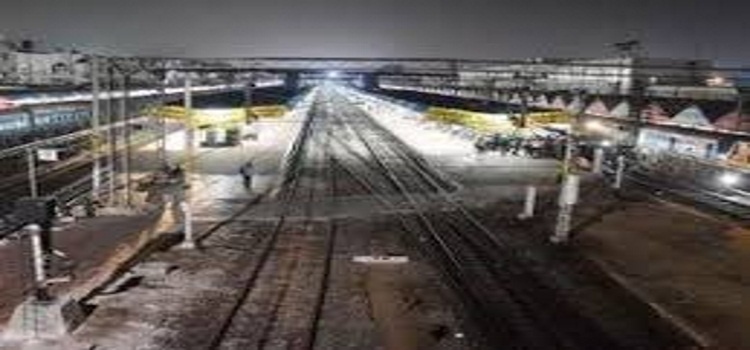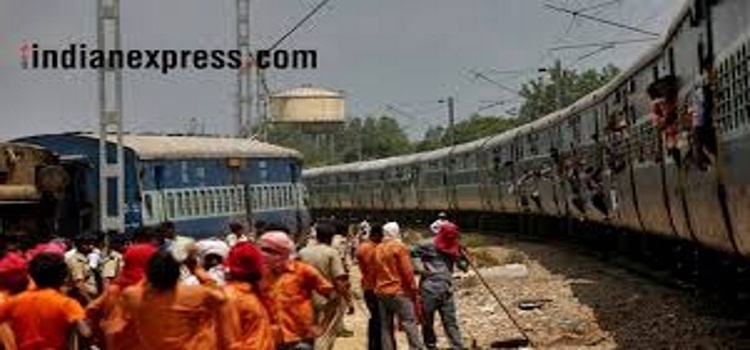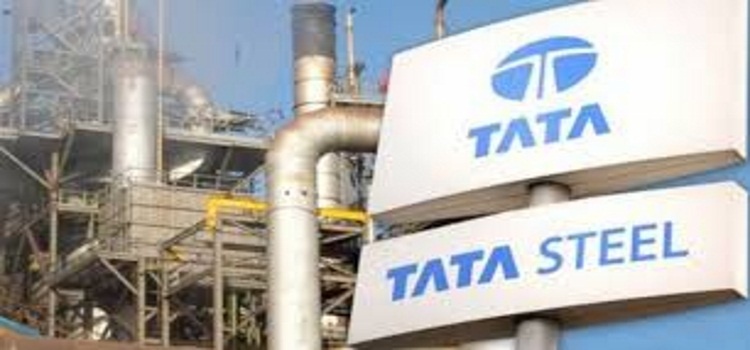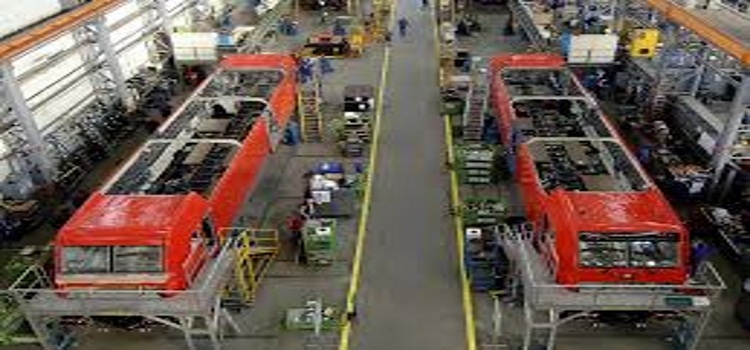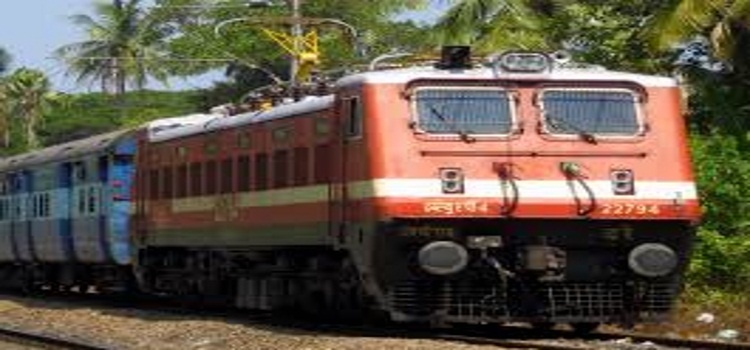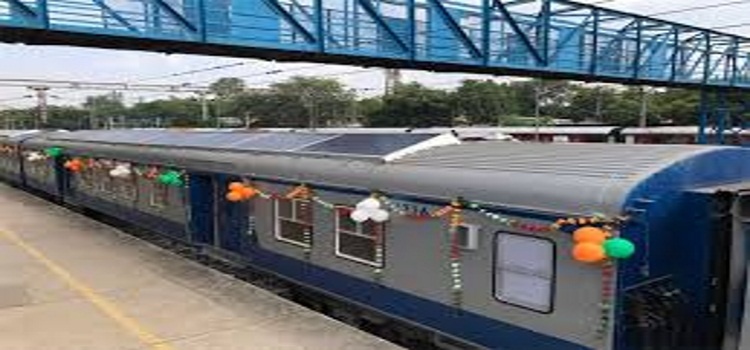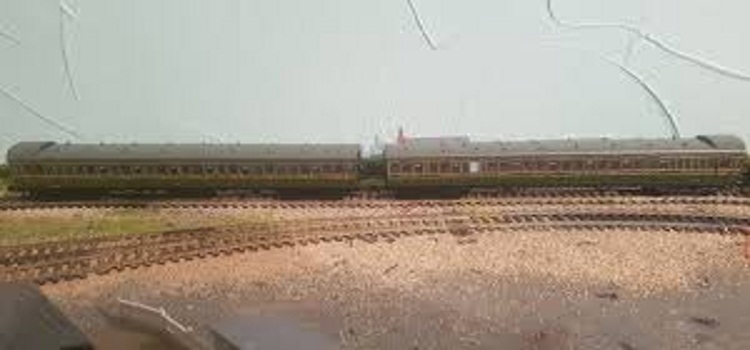
The South East Central Railway (SECR) will use GPS based tracking devices with Pre-Installed Sim for monitoring of Track Patrolling activity in the zone .
The software to be utilised for the device would have a mapping mode to track the movement of track patrolling team, officials informed.
SECR would also soon start the process for execution of telecom works in connection with setting up of high accuracy Global Positioning System (GPS) clocks in 8 railway stations of Chhattigarh, officials informed.
The clocks would be installed at Raipur (03), Durg (03), Bhilai Power House (02), Bhatapara (03), Tilda (02), Bhilai (02), Dallirajhara (01) and Balod (01).
The GPS clock has a Global Positioning System (GPS) receiver which receives accurate time on a real time basis.
In May this year, SECR also emerged as the ‘Cleanest Railway Zone’ in the country.
Notably, the then Union Minister of Railways, Suresh Prabhakar Prabhu released Third Party Audit Report on Station Cleanliness and inaugurated ‘Swachh Rail Portal’ in New Delhi recently, an official press release of the Union Railway Ministry informed.
Vishakhapatnam in Andhra Pradesh and Beas in Punjab is the Cleanest Station in A1, ‘A’ Category stations respectively. Khammam station secured 2nd Rank in Station Cleanliness in ‘A’ Category from 285 Rank in the previous year.
Union Minister of State for Railways Rajen Gohain was specially present on the occasion.
Speaking on the occasion, the then Union Minister of Railways Suresh Prabhu said that Indian Railways started third party Cleanliness Index of Stations since last year.
Railways have accomplished a significant improvement in cleanliness at station. This index instills competitive spirit among the stations. The biggest challenge for cleanliness at the platforms is visitors along with the passengers, even the toilets are used by large number of visitors who are not Railway travellers, he said.
However, Railways have to move forward. The focus is on Platform cleanliness, coach cleanliness, toilets cleanliness in the coach and track cleanliness. Railways have introduced Clean My Coach services which is getting overwhelming response of the passengers, Four green corridors have been marked which are free from discharge of human waste. I urge the municipal corporation of the cities which have encroachments to come forward and cooperate in eliminating human waste from the tracks, Prabhu said.
He said that Vishakhapatnam has emerged as the winner in Cleanliness Index by securing Ist position in A1 category, Beas has emerged as Ist winner in ‘A’ category station. Guwahati, Varanasi, Mughalsarai and Hazrat Nizamuddhin Station have shown tremendous improvements.
Prabhu said that lot of NGO’s, Students groups have come forward to clean and beautify their stations.
The Ministry of Railways will soon carry out Preliminary Engineering Survey for laying of 4th railway line between Bilaspur and Nagpur under jurisdiction of South East Central Railway (SECR), officials informed.
Noyably , Central Public Sector undertaking RITES Ltd is also working on a major turn key project for the Ministry of Railways for laying the third railway track in Pendra Road- Anuppur section of Bilaspur division of South East Central Railway (SECR), a press release of the Union Ministry of Railways had informed earlier.
Notably, RITES Ltd, which is under the Ministry of Railways has recorded 18% increase in its total income in FY 2016-17 compared to 2015-16. It has for the first time crossed the Rs 1500 crores benchmark. Despite severe competition from domestic and foreign consultancy companies, RITES recorded PAT of around Rs 330 crores on a turnover of Rs 1508 crores, according to the provisional results submitted to its Board of Directors.
The company has also issued 2 bonus issues during the year, increasing its paid-up capital from Rs 100 crores to Rs 200 crores.
During the year, the company completed the supply of 120 coaches to Bangladesh Railways and has signed two new contracts with Sri Lanka Railways for the supply of Indian Railways produced locos (DLW, Varanasi) and DMU train sets (ICF, Chennai) which will be exported in the coming year by RITES to Sri Lanka Railways.
The railway track development in the Bhupdevpur-Gharghoda-Dharamjaygarh section under East Rail Corridor Project is also expected to get complete by December 31, 2018, officials informed.
Notably, the Centre has signed a Memorandum of Understanding (MoU) each with the States of Odisha, Jharkhand and Chhattisgarh for critical coal connectivity projects to improve transportation .
Agreement for World Bank loan of US $ 1100 million for Eastern Dedicated Freight Corridor (DFC) (Phase-2) have also been signed, they stated.
Freight train with speed of maximum 100 kms per hour will pass through Chhattisgarh in the East-West Corridor (Kolkata-Mumbai).
The train will traverse through the States of West Bengal, Jharkhand, Odisha, Chhattisgarh and Maharashtra as the Ministry of Railways has sanctioned implementation of Eastern Dedicated Freight Corridor (EDFC) and Western Dedicated Freight Corridor (WDFC) with freight train speeds of maximum 100 Kmph.
The Central government’s approval for construction of 165 km long third railway line between Anuppur and Katni in Madhya Pradesh is expected to facilitate additional coal transportation traffic from parts of Chhattisgarh.
The coal transporation traffic from IB valley, Korba area, East Corridor and Gevra – Pendra Road Project in Chhattisgarh would be channelized through the aforesaid route to the respective destinations, officials stated.
The Centre has approved the project at a cost of Rs 1595.76 crore. The project is likely to be completed in 5 ¼ years spanning over 12th and 13th plan period.
The Cabinet Committee of Economic Affairs, chaired by the Prime Minister Narendra Modi, has approved construction of six Railway lines and a Railway bridge to cater to both increased passenger and freight needs in various areas of the country.
Public sector IRCON International Ltd has also commenced work in connection with the construction of new ‘Broad Guage Electrified Double Railway Line’ in Chhattisgarh on the EastWest Corridor.
The work is being undertaken in Gevra Road-Pendra Road and Dipka, Kathghora, Sendurgahr and Pasan sections, officials stated.
The Union Ministry of Railways has set track renewal target of 551 kms for South East CentralRailway (SECR) division during the 12th plan period.
Track renewal is an ongoing process which is undertaken as and when a stretch of track becomes due for renewal on age-cum-condition basis, officials informed.
Track Renewal works are planned in advance every year and their execution is prioritized according to the condition of track and overall availability of funds ensuring all the time that track is in a sound condition for safe running of trains.
In case, if any stretch of track is not renewed in time due to various reasons including scarcity of funds, material etc., suitable speed restrictions are imposed to ensure safe running of trains.
As on March 31, 2016, track renewal covering 5900 km of track renewal have been sanctioned, out of which 2668 km is targetted for the year 2016-17.
As per norms, track renewal works are to be completed within two to three years of sanction. This, however, also depends on budget availability, officials stated.
The total Budget outlay in year 2016-17 has been enhanced from Rs 4000 crores to Rs 7500 crores to speed up the track renewal works in the country. Accordingly, physical targets have also been increased from 1500 km to 2668 km.
There are a total of 840 farmers in Chhattisgarh whose land had been acquired for the Dallirajahara-Rowghat rail line project, the Central government has informed.
It may be recalled that Chhattisgarh government would also be earmarking suitable land banks in the vicinity of Dallirajahara-Rowghat-Jagdalpur Rail Corridor for setting up of small industrial units, officials informed.
Notably, the Steel Authority of India Ltd (SAIL) is co-ordinating the construction of Railay line from DaIlirajhara to Rowghat covering a distance of 95 km with Indian Railways in Chhattisgarh.
The project for doubling of Railway line between Kirandul and Jagdalpur in Chhatisgarh’s insurgency ridden Bastar region is expected to be complete by January 2019, official sources informed.
The Jagdalpur-Kirandul project which involves 45.50 kms of rail track doubling work till Silkjuri will be completed this year. The remaining project work will be completed by year 2020, informed General Manager of East Coast Railway Zone, Umesh Singh last year.
He was paying a courtesy call on Chief Minister Raman Singh at his office in his residence here.
The General Manager also informed the Chief Minister about the status of Titlagarh-Raipur rail line project.
He told the Chief Minister that under Titlagarh-Raipur Project, track doubling work of 30-km till Kantabhanji will be completed this year and the entire project will be completed by year 2019.
Notabaly, for execution of the project, the Railways has divided the 150 km length of doubling work into three Sections namely, Jagdalpur to Silakjori 45.50 km, Kirandul to Gidam 52.23 km and Silakjori to Gidam 52.73 km.
Notably, NMDC is also developing full-fledged Railway transportation infrastructure at its upcoming 3 MTPA integrated steel plant at Nagarnar in Bastar district.
It has commenced the process of constructing a Railway Station , Traction sub-station and other necessary infrastructure at the private railway siding coming up at the site of 3 MTPA integrated steel plant at Nagarnar in Bastar district, official sources informed.
For the East Corridor, the Chhattisgarh government has decided to allocate 14 acres of land in Raigarh district. The Corridor will be about 180 km long from Bhupdevpur-Gharghoda-Dharamjaigarh up to Korba.
Notably, the Centre has signed a Memorandum of Understanding (MoU) each with the States of Odisha, Jharkhand and Chhattisgarh for critical coal connectivity projects to improve transportation .
Agreement for World Bank loan of US $ 1100 million for Eastern Dedicated Freight Corridor (DFC) (Phase-2) have also been signed, they stated.
Freight train with speed of maximum 100 kms per hour will pass through Chhattisgarh in the East-West Corridor (Kolkata-Mumbai).
The train will traverse through the States of West Bengal, Jharkhand, Odisha, Chhattisgarh and Maharashtra as the Ministry of Railways has sanctioned implementation of Eastern Dedicated Freight Corridor (EDFC) and Western Dedicated Freight Corridor (WDFC) with freight train speeds of maximum 100 Kmph.
The Central government’s approval for construction of 165 km long third railway line between Anuppur and Katni in Madhya Pradesh is expected to facilitate additional coal transportation traffic from parts of Chhattisgarh.
The coal transporation traffic from IB valley, Korba area, East Corridor and Gevra – Pendra Road Project in Chhattisgarh would be channelized through the aforesaid route to the respective destinations, officials stated.
The Centre has approved the project at a cost of Rs 1595.76 crore. The project is likely to be completed in 5 ¼ years spanning over 12th and 13th plan period.
The Cabinet Committee of Economic Affairs, chaired by the Prime Minister Narendra Modi, has also approved construction of six Railway lines and a Railway bridge to cater to both increased passenger and freight needs in various areas of the country.
Public sector IRCON International Ltd has also commenced work in connection with the construction of new ‘Broad Guage Electrified Double Railway Line’ in Chhattisgarh on the East West Corridor.
The work is being undertaken in Gevra Road-Pendra Road and Dipka, Kathghora, Sendurgahr and Pasan sections, officials stated.
Notably, the development of two key Rail corridors in mineral-rich Chhattisgarh is now set to expand the Railway line network by 45 per cent in the State, officials stated.
The completion of Dallirajhara-Rowghat-Jagdalpur, East and East-West Rail corridor projects will comprise a total of 535 kilometers Railway-line during the next two to four years, they stated.
The East West Rail Corridor project is expected to get completed in 2018-19.
The corridor is to facilitate movement of about 60 million tonnes of coal to various parts of the country apart from providing passenger train facility for the local populace of the region.



